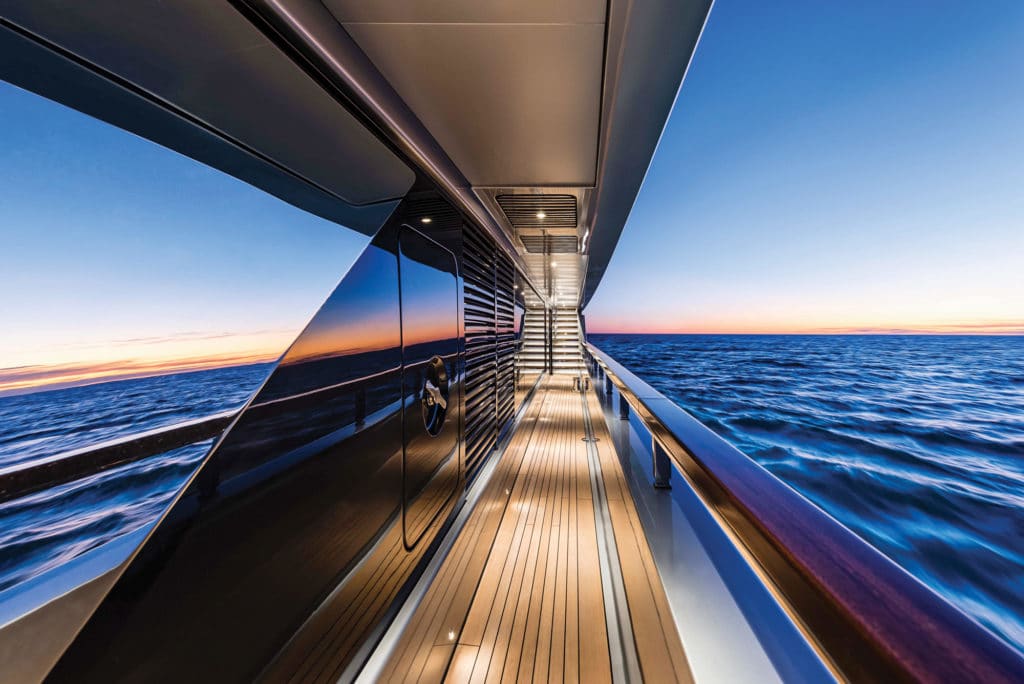
In the early 1950s, a young man enthralled with his father’s boatbuilding company took over the family business. As sometimes happens when new generations step in, he wasn’t content to do the same thing his father, or his grandfather, had done. Strong ambition persuaded him to design and build pleasure boats, as opposed to the racing and commercial boats of the shipyard’s past. What’s more, he continuously wanted to outdo himself, focusing on creating motoryachts that were more than boats, as well as status symbols.
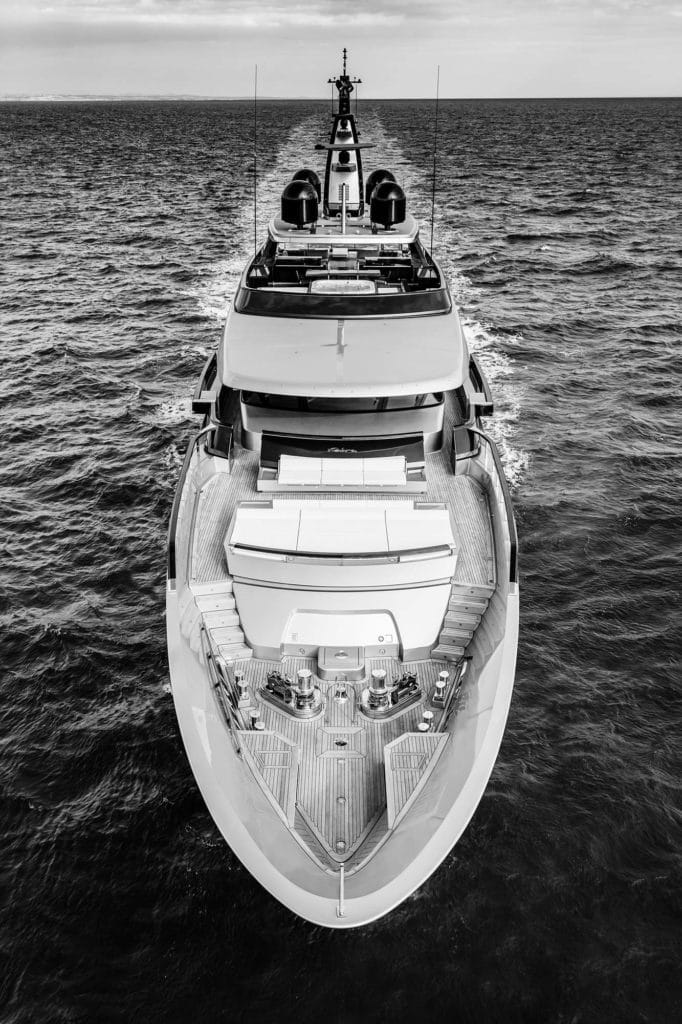
While the young Carlo Riva succeeded in all of this after taking the helm of Riva, there’s perhaps no better example of his driving ambition than the period from the mid-1960s into the 1970s, when he launched three limited series of motoryachts.
Not only were their steel hulls a marked change from the glistening mahogany of their sisterships, they were also far larger. The Atlantic series, at 88 feet, and the Caravelle series, at 74 feet, were astoundingly large for their eras. Between their style and the fact that they were faster than many other yachts at the time, they helped Riva find several clients.
More than 50 years later, the spirit of these series lives on with the Riva 50-Meter. It’s the first model in the Riva Superyachts Division and the second Riva constructed entirely of aluminum. At 160 feet, 9 inches length overall, she’s larger than any previous launch from the boatbuilder, but she upholds many of the same principles her predecessors established.
“She is full of personality, exactly like any other Riva yacht,” says Sergio Beretta, CEO and co-founder of Officina Italiana Design, the studio responsible for every modern-era Riva. “It is essentially a true connoisseur’s boat. In a nutshell, it is chic, and that is the whole logic behind it.”
Mauro Micheli, chief designer and co-founder of Officina Italiana Design, agrees. “It is certainly a boat with a very different character to its siblings” because of the LOA and four decks, he explains, “but references to Riva’s signature styling are a constant.”
That styling is well-known and detailed. For instance, Hull No. 1, Race, shows off varnished mahogany and stainless-steel handrails, complementing the metallic painted surfaces. Even the yacht’s wing stations have these handrail details. The richness of the high-gloss wood serves as a reminder that “artisanal craftsmanship is at the very core of each project,” Micheli asserts. “The handrails are the fil rouge [French for common thread] of the yacht.”
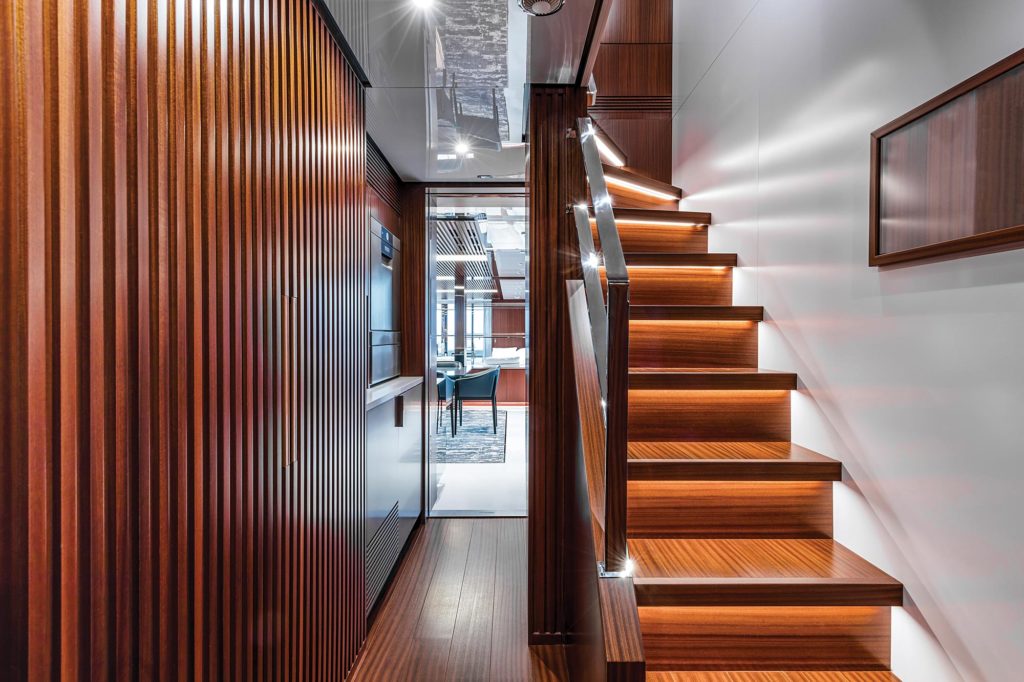
Further to the styling’s influences, Micheli mentions the Caravelle line, conceived in 1964. Its uncluttered, simple elegance inspired the team working on the 50-Meter. Though more angular than today’s yachts, the Caravelle had long lines and a proud bow—two timeless characteristics.
“They are the kind of lines that don’t necessarily set out to dazzle but still capture attention with their sheer simplicity,” Micheli says.
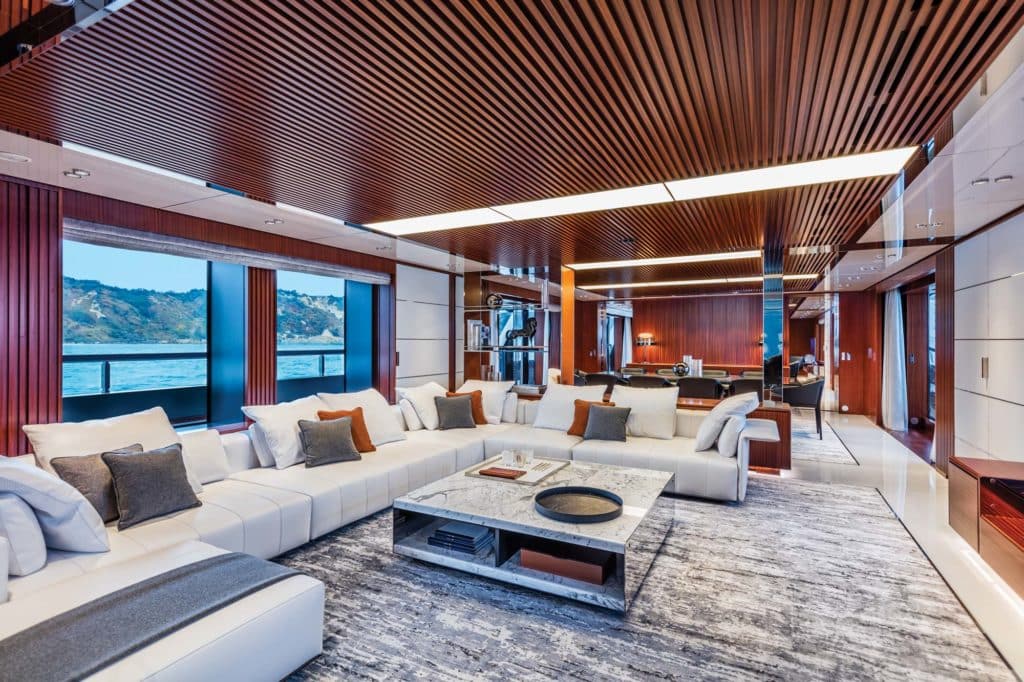
For the Riva 50-Meter, the studio focused on classic yet sleek lines. “Race has a great personality,” he says. “She has three straight lines that define each level. The design is clean. We refuse overworked, elaborate and redundant lines.”
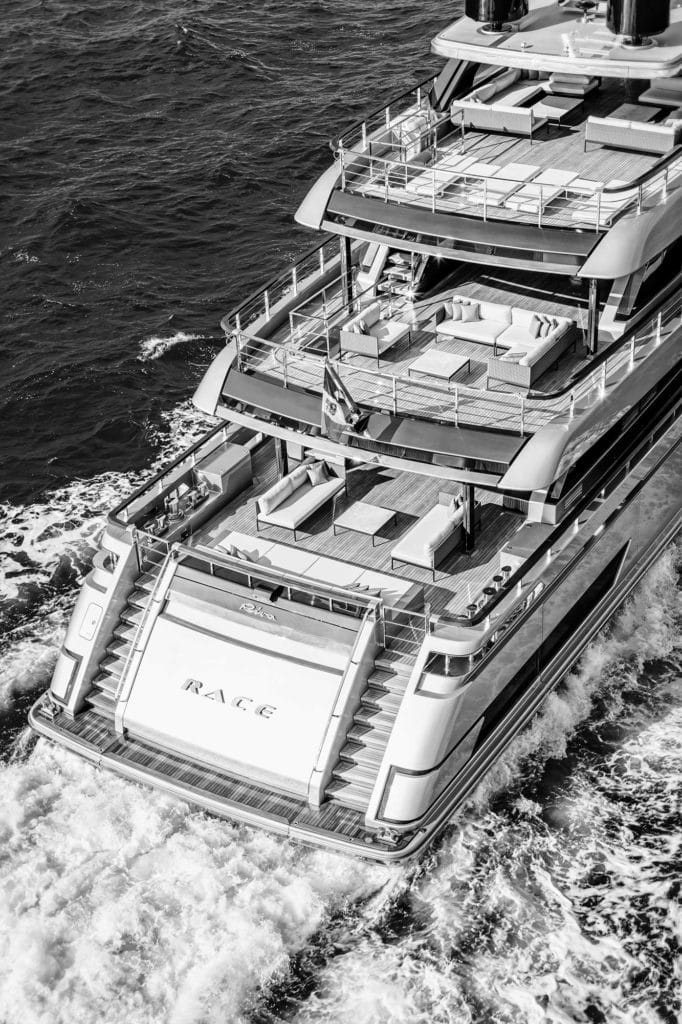
Amid these lines are some of the owner’s particular requests. “He wanted lots of light and to enjoy the external panoramas,” Micheli says. While every Riva—indeed, every large yacht—these days incorporates large glass ports, Race’s owner felt it was especially important for the 50-Meter to have them, notably along the main and upper decks. Additionally, in an interesting twist on an indoor-outdoor area, the covered alfresco dining area aft on the upper deck has slide-open glass to each side.
In terms of the open alfresco areas, meanwhile, the owner wanted a front-row seat for when he was approaching shorelines. This explains why Race has cozy seating and viewing spots at the bow and up on the sun deck. Yet another request outside, for similar reasons: a walk-around hot tub and sun pads aft on the upper deck. The owner envisioned standing back here as Race entered a marina and tied up stern-to.
Inside is a relatively customary arrangement, with accommodations for 10 to 12 guests in five staterooms: a main-deck master and four guest staterooms below. However, the owner did request that the galley go belowdecks, with a dumbwaiter connecting it to each of the upper levels. The relocation of the galley permitted more room for the master stateroom.
With Hull No. 2 in the 50-Meter series under construction, Riva is poised to make its mark in the superyacht sector. Larger models are coming too, with the biggest being the 90-Meter (295 feet).
And while Carlo Riva didn’t live to see the 50-Meter launch, having died at age 95 in 2017, there’s no doubt he’d be proud. “The first time that engineer Carlo Riva saw the renderings of the first Riva 50-Meter mega-yacht, he said, ‘I’d like to try and cruise on her,’” Micheli recalls.
Perhaps the once-determined heir to the family business is doing that in spirit.
Take the next step: riva-yacht.com









